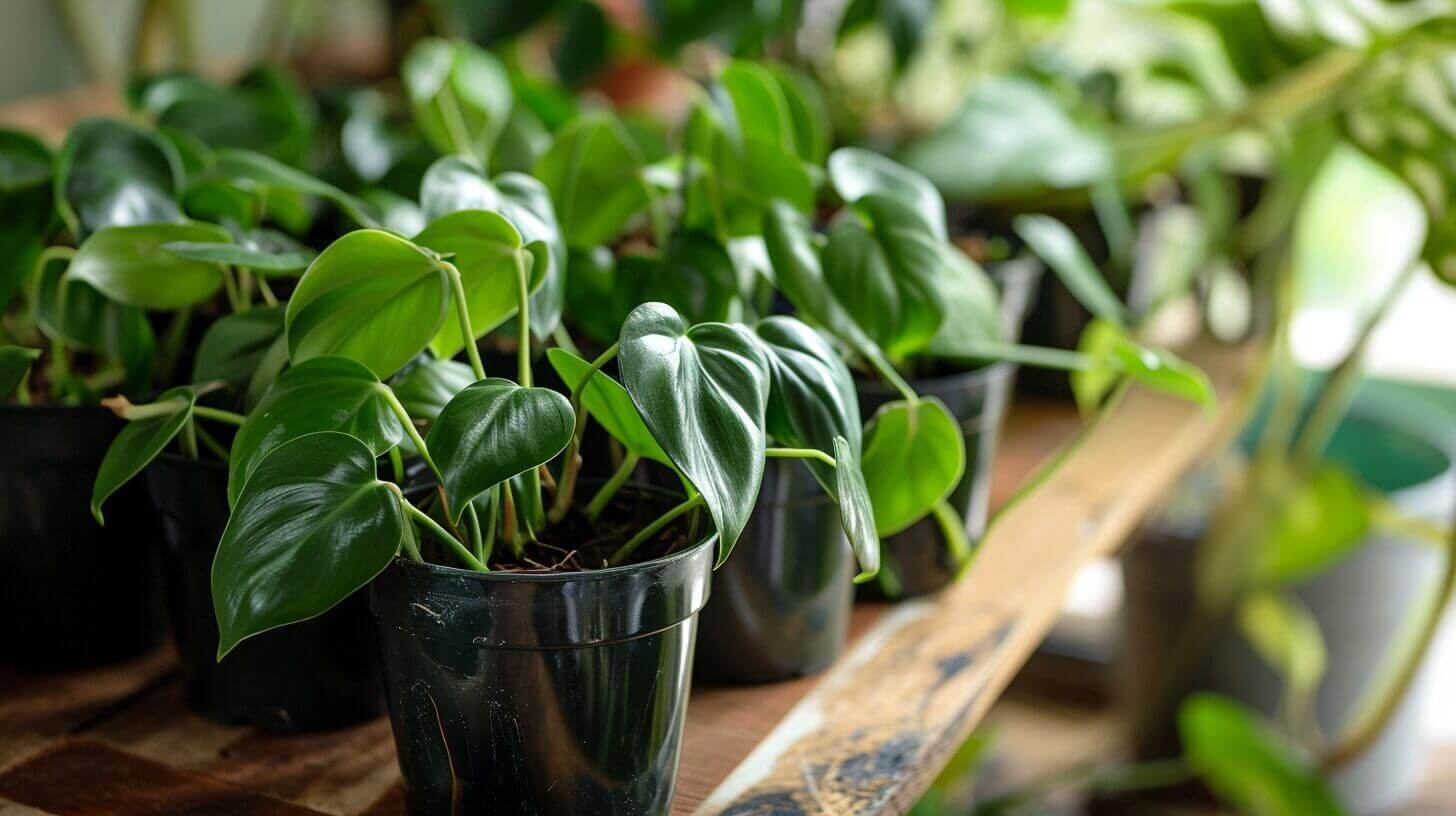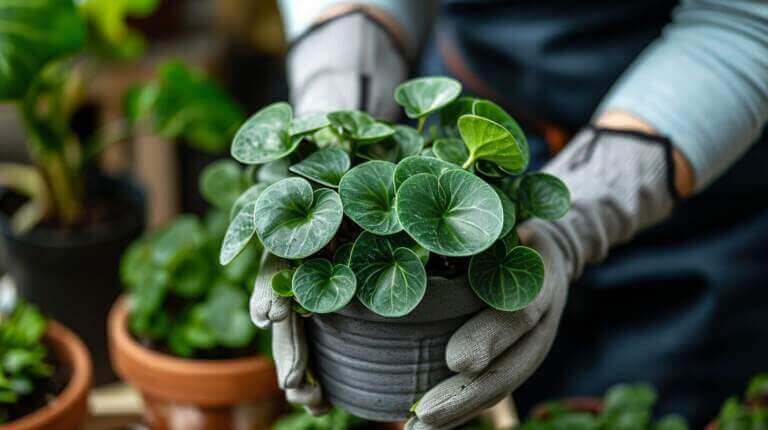How to Propagate Philodendron Cutting: Step-by-Step Guide For Philodendron Propagation
Are you a beginner plant enthusiast looking to expand your collection? Have you considered propagating a philodendron?
In this step-by-step guide, we will provide you with the necessary tools and knowledge to successfully propagate a philodendron plant.
From gathering materials to caring for your new plants, this informative article is tailored to beginners, offering detailed instructions and a beginner-friendly approach.
Get ready to embark on your journey to propagate and nurture beautiful philodendron plants.
Key Takeaways
- Choose well-draining potting soil rich in organic matter
- Examine leaves for signs of disease or pests
- Consider water propagation or soil propagation
- Establish a regular watering schedule to avoid overwatering and root rot
Gathering the Necessary Materials
To begin the process of propagating a Philodendron, it is essential to gather all the necessary materials. The first step is to choose the right potting soil. Philodendrons thrive in a well-draining soil mix that is rich in organic matter. Look for a potting soil specifically formulated for houseplants or one that contains a combination of peat moss, perlite, and compost.
Next, finding the ideal location for propagation is crucial. Philodendrons prefer bright, indirect light, so choose a spot where they can receive ample sunlight without being exposed to direct rays. A north or east-facing window is often a suitable location. Additionally, make sure the area has consistent temperature and humidity levels to promote healthy growth.
Preparing the Propagation of Philodendron Houseplant
Before proceeding with propagation, it is important to assess the health and condition of the parent plant. This step ensures that you are working with a strong and viable plant that will produce healthy offspring. Start by examining the leaves for any signs of disease or pests. Trim away any dead or yellowing leaves using pruning techniques such as clean cuts at a 45-degree angle. Next, prepare the soil by ensuring it is well-draining and rich in nutrients. A recommended soil mix for Philodendrons is a combination of peat moss, perlite, and potting soil. This will provide the ideal growing environment for the parent plant and its offspring. Once the parent plant is healthy and the soil is ready, you can proceed to choose the right propagation method.
| Pruning Techniques | Soil Preparation |
|---|---|
| Trim away diseased or dead leaves | Use a well-draining soil mix |
| Cut at a 45-degree angle for clean cuts | Incorporate peat moss, perlite, and potting soil |
| Dispose of pruned leaves properly | Ensure the soil is rich in nutrients |
Now, let’s move on to the next step of choosing the right propagation method.
Choosing the Right Propagation Method
Once you have assessed the health and condition of the parent plant, you can now proceed to determine the most suitable propagation method. There are two main methods to choose from: water propagation and soil propagation.
Water propagation involves placing a cutting in water until roots develop. This method is popular among beginners because it allows you to observe root growth and is less messy than soil propagation. However, it requires more frequent monitoring and can be less successful with certain plant species.
On the other hand, soil propagation involves placing the cutting directly into moist soil. This method provides a more natural environment for root development and is generally more successful for a wider range of plant species. However, it requires more care to avoid overwatering and rotting of the cutting.
When deciding on the best propagation timing, it is generally recommended to propagate philodendrons during the spring or summer when the plant is actively growing. This ensures optimal conditions for root development and overall success of the propagation process.
Propagating the Philodendron From Stem Cuttings
During the propagation process, it is crucial to carefully handle and prepare the philodendron cuttings with the utmost precision and attention to detail. To ensure successful propagation, there are various propagating techniques to consider.
One popular method is using stem cuttings. Start by selecting a healthy stem with at least two nodes. Make a clean diagonal, cut the stem just below a node using a sharp, sterilized knife or scissors. Remove any lower leaves near the cut, leaving only a few at the top. It is important to allow the cuttings to callous over for a few hours before planting them in a well-draining potting mix.
Keep the soil moist but not waterlogged, and place the cuttings in a warm, bright area with indirect sunlight. Common issues during propagation include rotting stems due to overwatering or poor drainage, or the cuttings failing to root. Troubleshooting these issues involves adjusting watering frequency, improving soil drainage, and maintaining the right humidity levels.
Caring for Your New Philodendron Plants
After successfully propagating your philodendron plants, it is essential to provide them with proper care and maintenance to ensure their healthy growth and longevity. Here are some tips to help you care for your new philodendron plants:
- Watering schedule: Philodendrons prefer moist soil but can be susceptible to root rot if overwatered. It’s important to establish a regular watering schedule. Water the plants thoroughly and allow the top inch of soil to dry out before watering again. Avoid waterlogging the soil.
- Fertilizing tips: Philodendrons benefit from regular fertilization to promote growth and vibrant foliage. Use a balanced, water-soluble fertilizer diluted to half strength and apply it every 2-4 weeks during the growing season. Be careful not to overfertilize, as it can lead to salt buildup and damage the plant.
- Monitor light exposure: Philodendrons thrive in bright, indirect light. Place them near a window with filtered sunlight or provide artificial grow lights if natural light is limited. Avoid placing them in direct sunlight as it can scorch the leaves.
Frequently Asked Questions
Can I Use Different Types of Philodendron Varieties for Propagation?
When it comes to propagating plants, exploring different types of philodendrons can be an exciting endeavor. By using various philodendron varieties, gardeners can experiment with different propagation methods such as stem cuttings or air layering. The diversity of philodendrons allows for the propagation of unique foliage patterns and colors, adding an interesting touch to any indoor or outdoor garden space.
What Are the Different Types of Philodendron Plants?
Philodendron plants are among the most popular types of houseplants, loved for their lush green foliage and ease of care. There are various types of Philodendrons, including the heart-leaf, the Congo Rojo, and the selloum. Each type has its unique characteristics, making them a versatile choice for indoor greenery enthusiasts.
How Often Should I Water My Propagated Philodendron Cuttings?
Determining the appropriate watering frequency for propagated philodendron cuttings is crucial for their successful growth. Overwatering can be detrimental to the plants, causing root rot and other issues. It is important to find the right balance by observing the moisture level of the soil.
Factors such as the climate, humidity, and the type of potting mix used also play a role in determining the watering frequency. By understanding the signs of overwatering and adjusting accordingly, beginners can ensure the healthy development of their propagated philodendron cuttings.
How Long Does It Usually Take for Philodendron Cuttings to Root?
The time it takes for philodendron cuttings to root can vary depending on various factors. Typically, it can take anywhere from 2 to 6 weeks for roots to develop.
However, it’s important to note that there are common issues that can delay or hinder the rooting process, such as inadequate moisture, improper temperature, or using unhealthy or poorly prepared cuttings.
Can I Propagate a Philodendron From a Single Leaf Instead of a Stem Cutting?
Propagation success can vary when it comes to propagating a philodendron from a single leaf compared to a stem cutting. While stem cuttings are the more commonly used method and generally have higher success rates, it is possible to propagate a philodendron from a single leaf. However, it is important to note that success rates may be lower and the process may take longer.
The best time for philodendron propagation is during the spring and summer months when the plant is actively growing.
What is philodendron propagation?
Philodendron propagation is the process of growing a new philodendron plant from stem cuttings, leaf cuttings, or through division of the mother plant.
How can I propagate philodendron plants?
You can propagate philodendrons by taking cuttings from a healthy mother plant and placing them in water or soil. Using a rooting hormone can help stimulate new growth.
Can I root a philodendron in water?
Yes, you can root a philodendron in water. Simply place your cutting in a jar of water and change the water every few days.
Can I propagate a leaf philodendron?
Yes, you can propagate a leaf philodendron. Make sure to include at least one node in your cutting as this is where new roots will grow.
Can I root a philodendron in soil?
Yes, you can root a philodendron directly in soil. Make sure the soil feels dry before watering to prevent overwatering.
What types of philodendron can be propagated?
Most types of philodendrons can be propagated, including popular varieties like the heartleaf philodendron, fiddle leaf philodendron, and the split-leaf philodendron.
How do I grow a philodendron from cuttings?
To grow a new plant from philodendron stem cuttings, make a clean cut below a leaf node, dip the cut end in rooting hormone, and place the cutting in water or soil.
What is the best potting mix for propagating philodendrons?
A well-draining potting mix is best for propagating philodendrons. You can use a mix of peat moss, perlite, and compost.
How do I use rooting hormone for propagating my philodendron?
To use rooting hormone, dip the cut end of your stem cutting into the hormone before placing it in water or soil. This helps stimulate root growth.
How do I care for my newly propagated philodendron?
Care for your newly propagated philodendron by providing it with indirect light, keeping it in warm temperatures, and watering it when the top inch of soil feels dry.
Can I Propagate Philodendron Cuttings in Water Instead of Soil?
Yes, you can propagate Philodendron cuttings in water instead of soil. This method, known as propagate philodendron in water, involves placing the cuttings in water until they develop roots. It is a popular and effective way to propagate Philodendrons, allowing you to expand your plant collection without the need for soil.
Can I propagate my philodendron through division?
Yes, you can propagate your philodendron through division. This involves separating a portion of the mother plant, making sure to include roots, stems, and leaves, and planting it in its own pot.
How do I know if my cutting is ready to be planted in soil?
Your cutting is ready to be planted in soil once it has developed roots that are about an inch long. This usually takes a few weeks when rooting in water.







